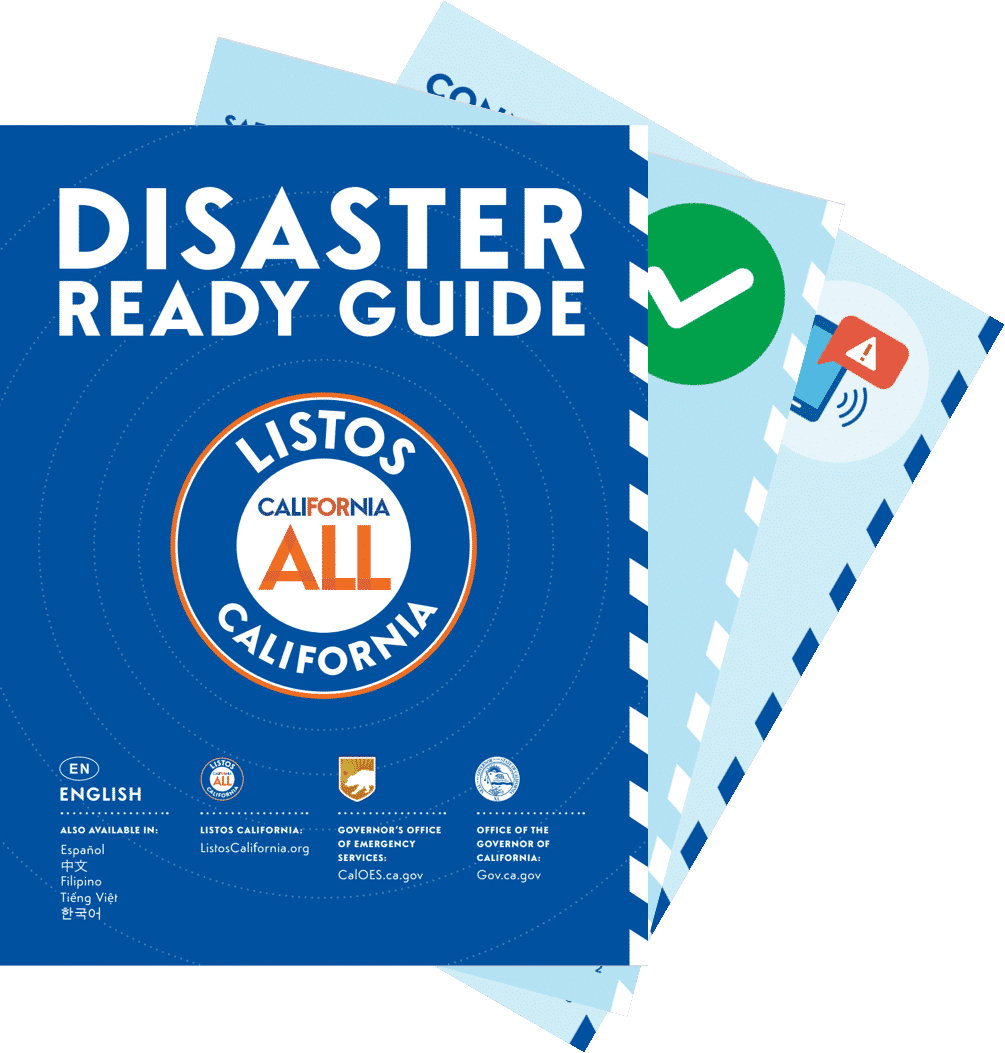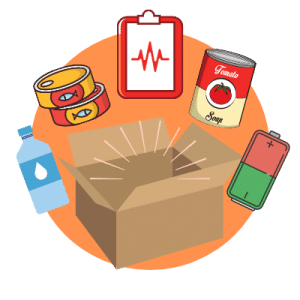Disaster
Preparedness

LISTOS
CALIFORNIA FOR ALL
About Listos California
Every Californian, regardless of age, ability, income or language, deserves culturally competent education to prepare for earthquakes, floods, and the immediate threat of wildfires. Thanks to an investment of public funds by Governor Gavin Newsom and state lawmakers, Listos California has worked with communities across the state to boost resiliency, provide new accessible in-language information and advance a new culture of disaster preparedness.
Anchored at the Governor’s Office of Emergency Services (Cal OES), Listos California reached nearly 4 million people with low incomes, disabilities and language barriers, older adults, and other highly vulnerable Californians from 2019 – 2021.
Download the Listos
California Disaster Ready Guide
Don’t be caught in a wildfire, flood, earthquake or power shutoff unprepared. Download this handy guide filled with important information that will help you be prepared for any disaster. The guide includes a Connect and Protect worksheet to help you keep track of important emergency contacts. Whether it be for a family member, friends, or caregivers, the Connect and Protect worksheet will help you keep the most important information available in an emergency.
The guide also includes tips for pregnant women, parents of infants, caregivers, pet owners, older adults, individuals living in rural communities, people with developmental disabilities including speech, communication, mobility and physical disabilities.
Don’t forget to download other resources listed below!
Available in 7 Languages
1. Get alerts to know what to do.
Seconds of advance warning can provide opportunity to take life-saving actions.
If you are not safe at home, work or school due to a disaster, you will need to go to a safe place and meet up with people you care about. It’s hard to know ahead of time where these safe places might be. These places might change based on the kind of emergency you face. You can dial 211 on your phone to find a 2-1-1 public shelter.
2. Make a plan to protect your people.
Disasters are challenging for everyone. Each of us has different needs in preparing for a disaster. You, or someone you care about, can benefit from planning ahead. Think now about ways to make the experience safe and comfortable for all.
3. Get to safety with things you need.
Most disasters are unexpected and happen fast. You might not have time to shop, or even to pack. Pack up important items now, so you and your family will have what you need later.
Pack a Go Bag for when you have to leave home in a hurry. Pack things for each member of your household. Think about what you would take if you had 15 minutes of notice to leave your home. Now, think if you had just two minutes.
4. Stay safe at home when you can’t leave.
Add items to a Stay Box, for when you can’t leave home. Prepare for at least 3 days without water or electricity. Save up a little at a time, until you have enough for everyone in your household to get by. Remember any pets. If you already own a flashlight or a portable radio, keep it someplace easy to find.
5. Help friends and neighbors get ready.
Whether you work with a Community-Based Organization, faith group, social club, school, civic or neighborhood group, you can help people in your community take five easy and free steps to prepare for a disaster like an earthquake, wildfire or flood.








